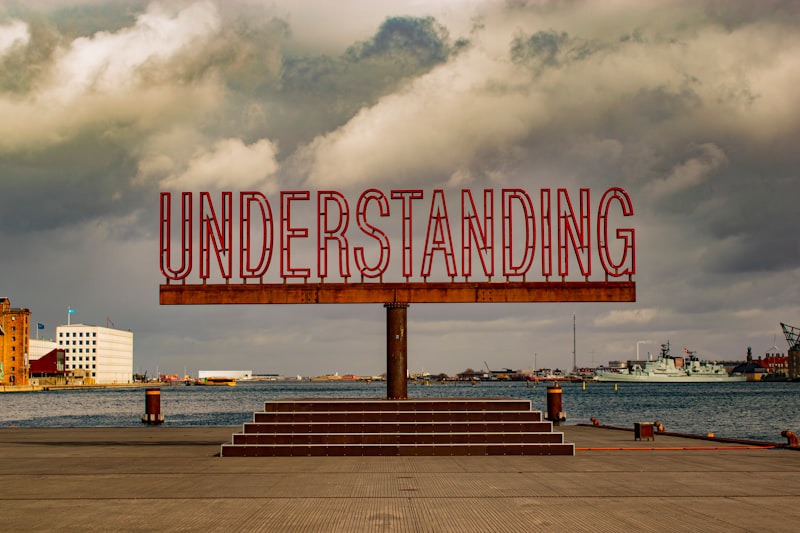- Dreams have fascinated humans for centuries, with various theories and perspectives attempting to explain their meanings.
- Some theories, such as the activation-synthesis hypothesis and Freud’s theory of dream analysis, suggest that dreams are a product of random brain activity or symbolic representations of repressed desires and conflicts.
- Dreams serve multiple functions, including emotional processing, memory consolidation, preparation for potential threats, cognitive activation, and problem-solving.
- Dream interpretation is subjective and can vary based on personal beliefs, cultural factors, and individual experiences. Keeping a dream journal and reflecting on the content of dreams can provide insights into one’s unconscious mind and personal struggles.
The meaning of dreams has fascinated us for centuries, with many different theories existing about their meanings. While the true purpose of dreaming is not fully understood, we will explore different perspectives on dreams, including theories, processes, impacts, interpretations, and cultural and historical views.
Various Theories About Dreams

Dreams have fascinated and perplexed people for centuries. People have long sought to uncover the true meaning behind their dreams, believing that they offer insights into our subconscious minds and provide glimpses into the mysteries of our lives. There are several theories that attempt to explain why we dream and decipher the true significance of our dreams. While each theory offers a unique perspective on dream meanings, no single theory has been proven definitive. Let’s explore some of the most prominent theories below:
1. Activation-Synthesis Hypothesis
The activation-synthesis hypothesis suggests that dreams are simply the result of random brain activity during REM (rapid eye movement) sleep. According to this theory proposed by Harvard psychiatrists John Allan Hobson and Robert McCarley, our brains create stories from these random thoughts and images as a way to make sense of them. The content of our dreams is not significant and does not carry any hidden meanings, but rather it is our brain’s attempt to create a coherent narrative from the chaotic firing of neurons.
2. Freud’s Theory of Dream Analysis
Sigmund Freud, the father of psychoanalysis, believed that dreams were a window into the unconscious mind. According to Freud, dreams are symbolic representations of repressed desires, fears, and unresolved conflicts. He argued that the manifest content of a dream (the actual imagery and storyline) is a disguise for the latent content (the hidden meaning). Freud believed that by analyzing dreams, one could gain insight into their true desires and conflicts, thus providing a pathway to self-discovery.
3. Threat Simulation Theory
The threat simulation theory suggests that dreams serve as a defense mechanism to prepare us for potential threatening events in waking life. This evolutionary-derived theory proposes that dreams allow us to practice cognitive mechanisms necessary for threat perception and avoidance. Through dream simulations, we can better prepare ourselves for potential dangers in reality.
4. Continual-Activation Theory
The continual-activation theory proposes that dreaming is a process by which our brains remain active during sleep to keep the mind functioning properly. This theory suggests that dreams serve as a way to maintain neural activation and keep the brain stimulated. While the exact purpose of this continual activation is not yet fully understood, some researchers believe it may contribute to memory consolidation and learning processes.
5. Other Theories
In addition to these prominent theories, there are several other theories about dream meanings. Some researchers propose that dreaming helps us process emotions and regulate our emotional experiences. Others suggest that dreams help us make sense of daily experiences and memories or serve as a creative outlet for problem-solving and idea generation.
It is important to note that these theories are not mutually exclusive, and dreams likely serve multiple functions based on individual experiences and circumstances. Additionally, the significance of dreams may vary from person to person, as personal beliefs and cultural factors can influence dream interpretation.
6. Making Sense of Your Dreams
While the true meaning of dreams remains elusive, many people find value in exploring their dream experiences. Keeping a dream journal and reflecting on the content of your dreams can help you uncover patterns, symbols, and emotions that may offer insights into your unconscious mind. By paying attention to your dreams and their connections to your waking life, you can gain a better understanding of yourself, your desires, and your challenges.
The Process and Impact of Dreaming

Dreaming is a fascinating and mysterious experience that occurs when we sleep. It involves vivid mental imagery, emotional shifts, and varying levels of awareness. But what exactly is the purpose and impact of dreaming? Let’s explore the process of dreaming and its effects on our emotional and cognitive wellbeing.
1. The Purpose of Dreams
Why do we dream? While scientists are still trying to fully understand the purpose of dreams, there are several theories that shed light on this phenomenon.
Emotional Processing
Dreams may serve as a way for our brains to process and regulate emotions. During REM sleep, which is when dreams are most vivid, our brains actively engage in emotional memory consolidation. This means that the brain sorts through the emotions we experienced during the day, deciding what to keep and what to let go. Dreams can help us process our feelings, making problems less daunting after a good night’s sleep.
Memory Consolidation
Another important function of dreams is memory consolidation. Our brains go through various stages of sleep throughout the night, and dreams can occur during both REM and non-REM sleep. During these different stages, our brains process and consolidate memories from the day. Dreams may help organize and integrate these memories, turning short-term memories into long-term ones.
Practice and Preparation
Some theories suggest that dreaming serves as a way for us to practice and prepare for real-life scenarios. Our early human ancestors faced daily threats to their survival, and dreams could have been a way for them to rehearse escaping danger or finding shelter. This practice in dreams may have prepared our ancestors to deal with similar situations in real life without any actual risk.
2. The Impact of Dreaming
Dreaming can have a significant impact on our sleep quality and overall wellbeing. Here are some ways in which dreams affect us:
Emotional Regulation
Dreaming provides an opportunity for emotional regulation. When we dream, our brains engage in emotional processing and can help defuse traumatic or distressing emotions. Dreams allow us to confront and work through feelings we might have suppressed during our waking hours, offering a safe space to explore and resolve emotional conflicts.
Cognitive Processing
Dreaming also supports cognitive processing, especially when it comes to memory consolidation. Dreams help organize and integrate information acquired during the day, turning it into long-term memories. This cognitive processing is vital for learning and memory formation.
Problem-Solving
Have you ever woken up with a solution to a problem or a new idea? Dreams have been known to inspire creativity and provide insights into difficult situations. They can offer new perspectives and innovative solutions by allowing us to think outside the box.
Nightmares
While not all dreams are pleasant, even nightmares play a role in our emotional and psychological wellbeing. Nightmares can be intense and distressing, but they can also serve as a way for us to confront fears, process traumatic experiences, and build resilience. Working through nightmares with the help of therapy or self-reflection can lead to emotional growth and healing.
Understanding and Interpreting Dreams

Dreams have fascinated and puzzled humans for centuries. We often wake up after a vivid dream and wonder if there is any deeper meaning behind it. While the true meaning of dreams remains a mystery, there are several theories and techniques that can help us understand and interpret them. In this section, we will explore some of the common theories of dream interpretation and provide tips for analyzing your own dreams.
1. Theories of Dream Interpretation
Freud’s Theory of Wish Fulfillment
Sigmund Freud, the renowned psychologist, believed that dreams are a manifestation of our unconscious desires. According to Freud, dreams serve as a way for our unconscious mind to fulfill our deepest wishes that may be repressed or unfulfilled in our waking life.
Jung’s Theory of Compensation
Carl Jung, another influential psychologist, proposed that dreams provide a balance or compensation for aspects of our personality that are in conflict with each other. He believed that dreams could reveal unseen parts of ourselves and offer insights into our psyche.
Hall’s Theory of Self-Reflection
Psychologist Calvin S. Hall suggested that dreams are a reflection of our thoughts and ideas. He believed that dreams could provide valuable insight into our sense of self, relationships, conflicts, and external environment.
Modern Theories
More recent theories on dream interpretation focus on the function and purpose of dreaming. Some scientists propose that dreams help with emotional processing, memory consolidation, performance improvement, and creativity enhancement.
2. Common Dream Themes
While the content of dreams can vary greatly from person to person, certain themes tend to recur in many people’s dreams. Here are some common dream topics and possible interpretations:
| Dream Topic | Possible Meaning |
|---|---|
| Teeth Falling Out | Anxiety about aging or personal appearance |
| Sex | Unfulfilled desires or exploration of sexuality |
| Cheating | Feelings of insecurity or fear of betrayal |
| Natural Disasters | Anxiety or fear about uncontrollable events |
| Falling | Loss of control or feelings of vulnerability |
| Nightmares | Stress, trauma, or sleep disorders |
3. Tips for Analyzing and Interpreting Dreams
Analyzing and interpreting dreams can be a personal and introspective process. Here are some tips to help you understand the deeper meaning of your dreams:
- Keep a Dream Journal
Record your dreams in a journal immediately after waking up. Write down as many details as you can remember, including emotions, people, objects, and locations. - Look for Patterns and Symbols
Pay attention to recurring patterns or symbols in your dreams. These may hold personal significance and can offer clues about underlying meanings. - Consider Context and Personal Associations
Reflect on the context of your dream and how it relates to your personal life. What was happening in your waking life before you had the dream? Are there any personal associations you make with the symbols or events in the dream? - Seek Different Perspectives
Share your dreams with trusted friends or family members and ask for their insights. Different perspectives can offer new insights and interpretations that you may not have considered. - Consult with a Professional
If you have recurring or troubling dreams that persistently impact your well-being, consider speaking with a mental health professional or dream analyst. They can help guide you through the interpretation process and provide support.
Remember that dream interpretation is subjective, and the meaning of your dream may be unique to you. Trust your intuition and allow yourself to explore different possibilities and interpretations.
Cultural and Historical Perspectives on Dreams

Dreams have always been a source of fascination and intrigue for humans throughout history. Different cultures and societies have developed their own interpretations and beliefs about the meaning and significance of dreams. Let’s explore some cultural and historical perspectives on dreams that shed light on this fascinating phenomenon.
1. Ancient Civilizations and Dreams
In ancient civilizations, dreams were often seen as messages from the gods or a medium for spiritual communication. For example, in ancient Egypt, dreams were believed to be important omens that could provide guidance and insight into the future. The Egyptians even had professional dream interpreters who would help decipher the hidden meanings behind dreams.
2. Freud and the Unconscious Mind
In the early 20th century, Sigmund Freud, the father of psychoanalysis, revolutionized the field of dream interpretation. Freud believed that dreams were a window to the unconscious mind and could reveal repressed desires, conflicts, and wishes. He introduced the concept of dream symbolism, suggesting that the images and events in dreams were representations of hidden thoughts and emotions.
3. Jung and Collective Unconscious
Another influential figure in dream psychology was Carl Jung, who believed that dreams could provide access to the collective unconscious, a shared repository of symbols, archetypes, and experiences. Jung saw dreams as a way to tap into universal themes and connect with the deeper aspects of human nature.
4. Cross-Cultural Perspectives
Dreams also vary across different cultures, reflecting their unique beliefs and traditions. In indigenous cultures, dreams often hold spiritual significance and are seen as a means of communication with ancestors or spirits. These cultures pay close attention to dreams, considering them valuable sources of wisdom and guidance.
In many African cultures, dreams are regarded as sources of healing or divination. They are believed to offer insights into illness or provide answers to important questions. Dream rituals and ceremonies are often performed to harness the power of dreams for spiritual or practical purposes.
5. Modern Perspectives on Dreams
Today, psychologists and anthropologists continue to study dreams and explore their cultural dimensions. Research has shown that dreams can be influenced by cultural practices, social experiences, and even political events.
Dreams have been found to reflect the collective anxieties and tensions within a society. For example, during times of social change or crisis, such as wars or revolutions, dreams may reflect the fears, hopes, and aspirations of individuals or communities. They can offer a unique perspective on the underlying social and psychological dynamics at play [1] during these transformative times.
6. Dream Interpretation Today
Dream interpretation remains a popular field of study and interest for many individuals. While there are no definitive answers to what dreams mean, exploring their cultural and historical significance can provide valuable insights into the human experience.
It’s important to remember that dream interpretation is subjective and personal. Dreams are deeply rooted in an individual’s unique experiences, emotions, and cultural background. What holds true for one person may not apply to another.
When it comes to interpreting your own dreams, it can be helpful to pay attention to the symbols, emotions, and themes that stand out. Keeping a dream journal and reflecting on the connections between your dreams and your waking life can provide valuable insights into your thoughts, feelings, and aspirations.
Ultimately, the real meaning of dreams is deeply personal and can vary from person to person. Exploring your dreams with an open mind and a curiosity about their cultural and historical dimensions can offer a richer understanding of yourself and the world around you.
Conclusion
Dreams remain a beautiful and mysterious aspect of our lives, providing glimpses into our innermost selves and offering us the chance to explore new possibilities. Whether you interpret them as mere products of random neural firings or as reflections of your deepest longings and fears, there is no denying the power and significance of our dreams. So next time you close your eyes and drift off to sleep, pay attention to the images that flit through your mind – who knows what treasures you might uncover? Remember to approach your dreams with curiosity and compassion, and you may find that they can offer you genuine insights into your life. Sweet dreams!










Leave a Reply